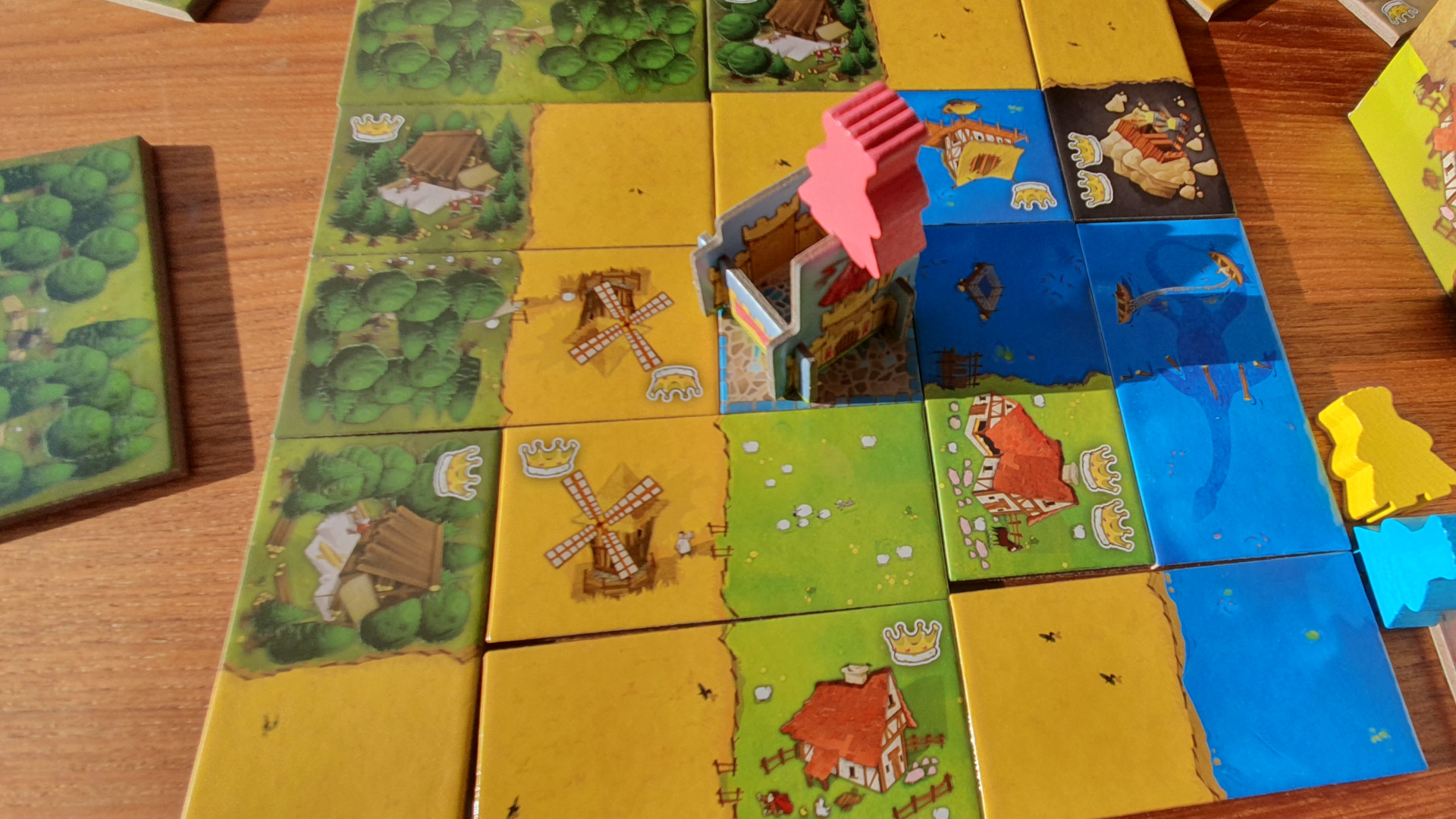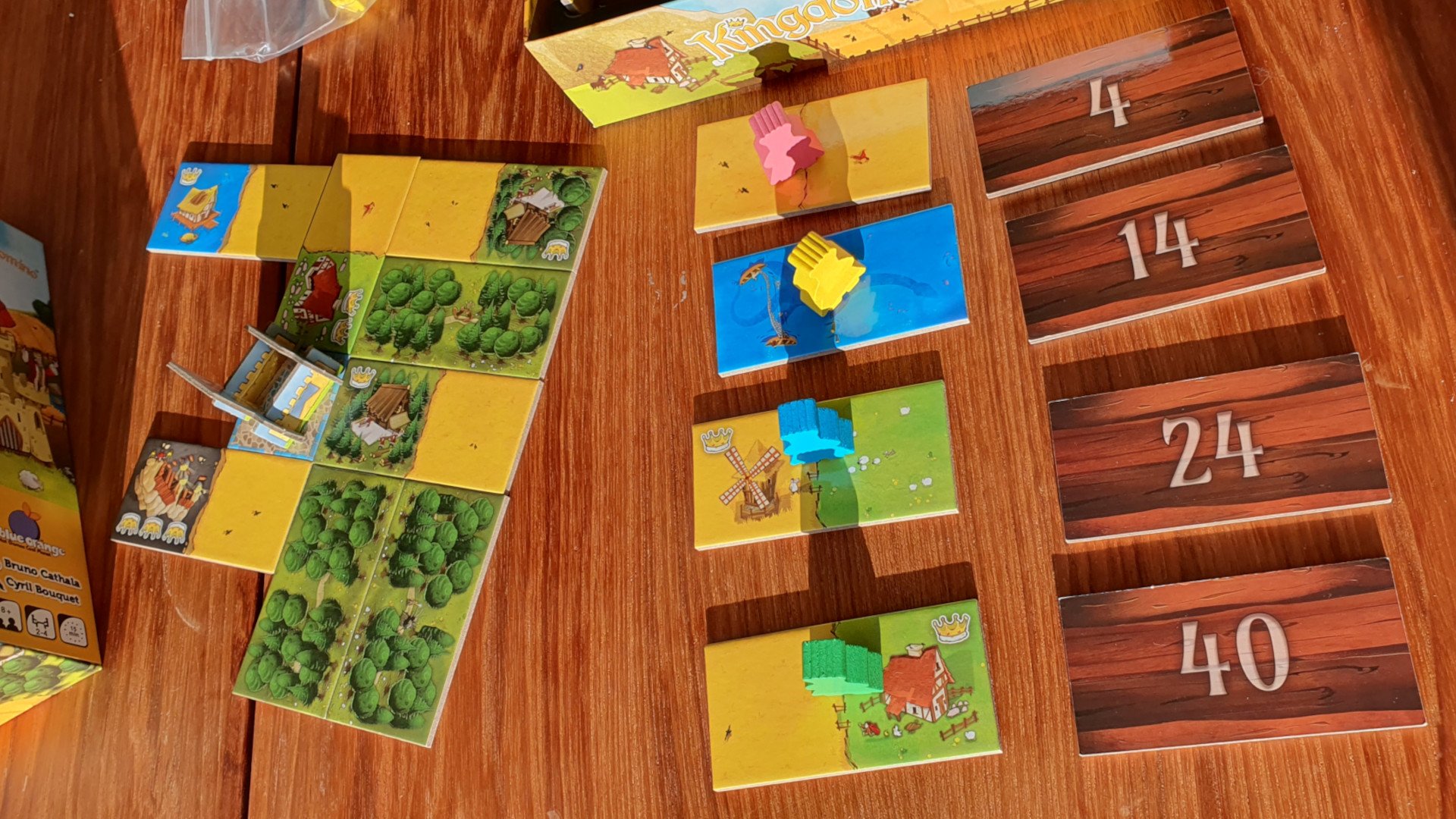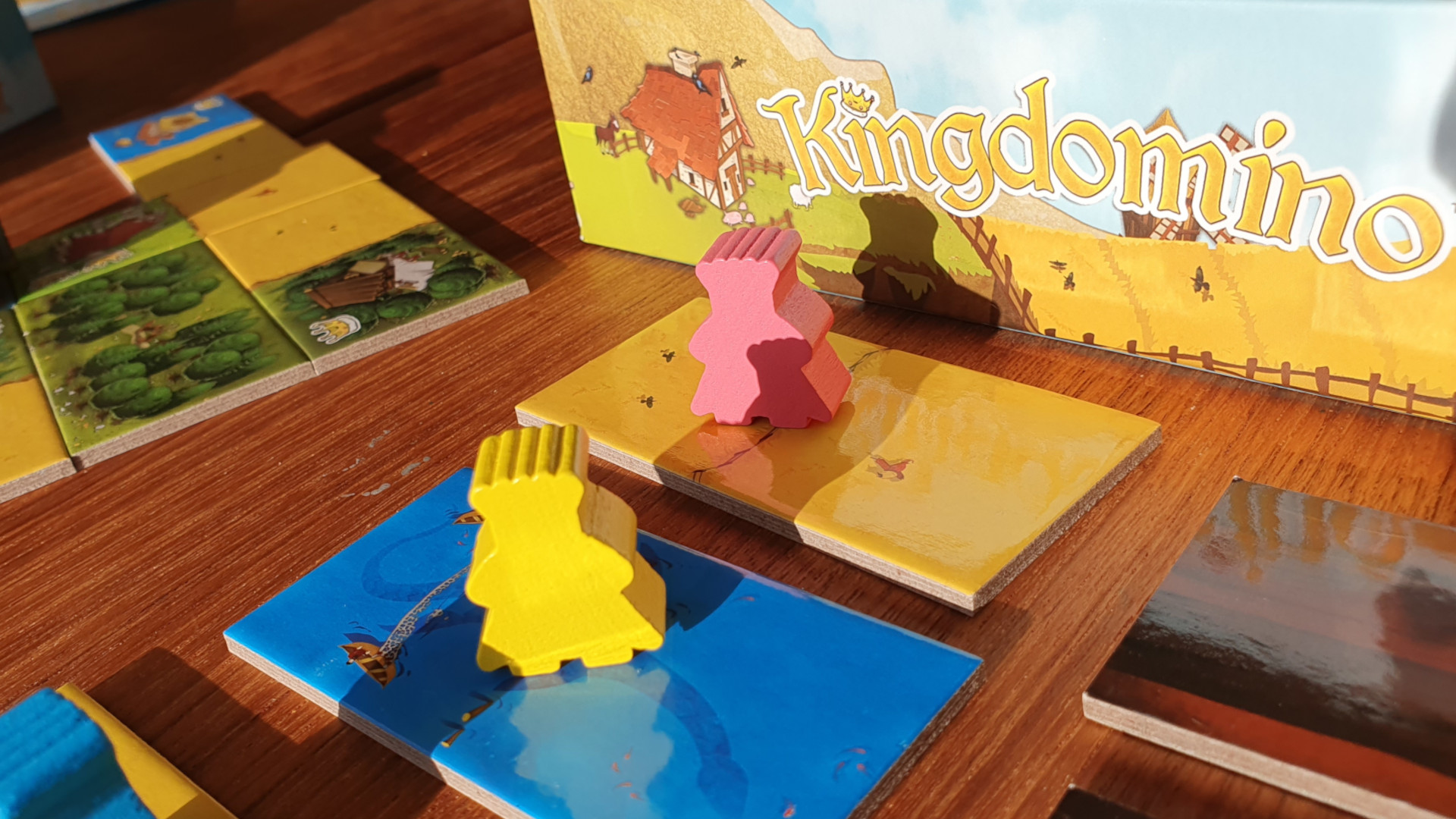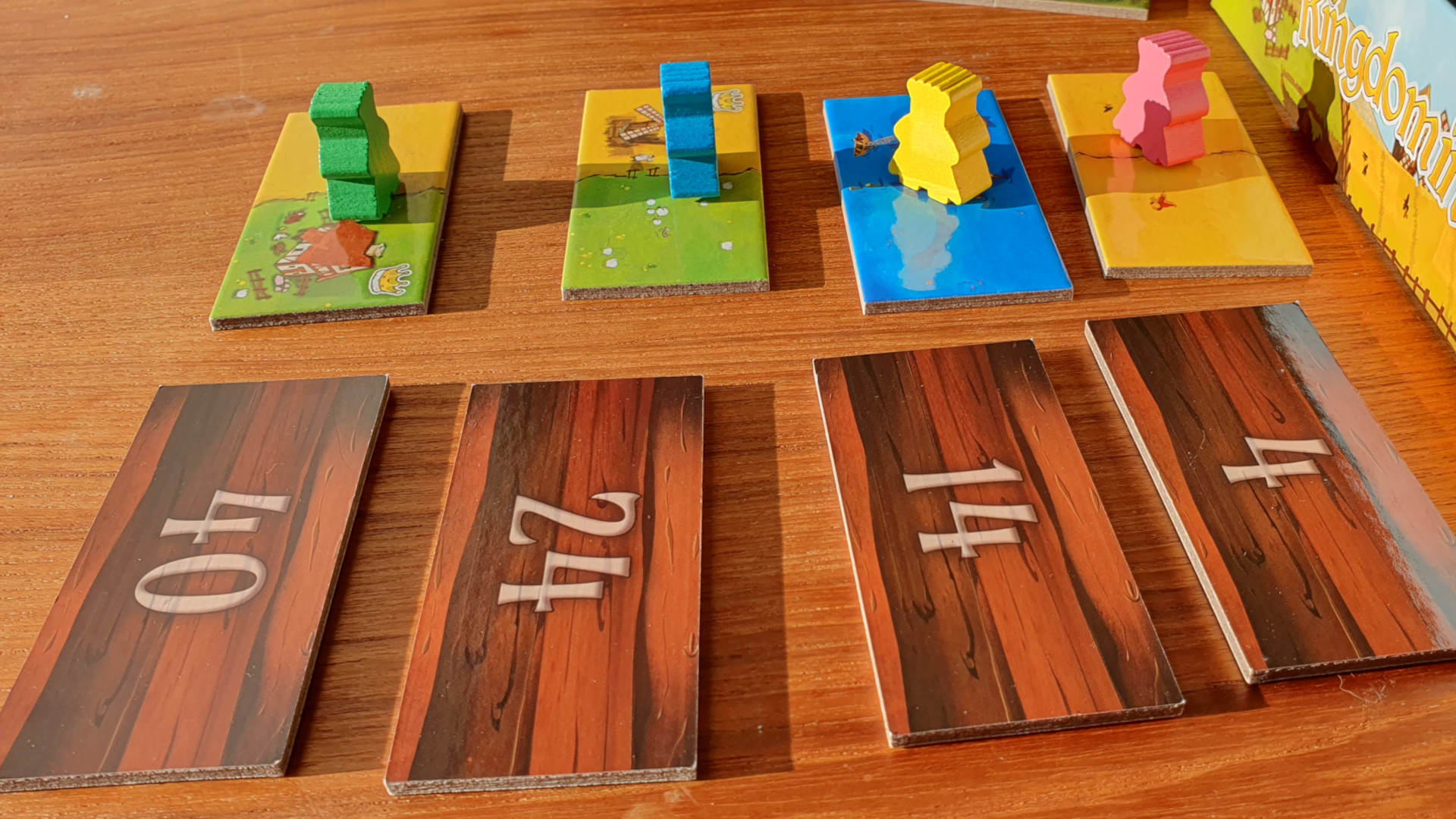I can’t think of a better description for Kingdomino than “small, and perfectly formed.” Everything, from Bruno Cathala’s simple ruleset, Cyril Bouquet’s charming pastoral art, or even the tidy and effective box-insert produced by publisher Blue Orange, delivers maximum satisfaction from the minimum resources.
I’m retrospectively reviewing this 2016 design – which has a well-justified position on our lists of the best board games, best kids board games, and best family board games – because, just like playing it, explaining its virtues is a simple delight.
Kingdomino has a simple premise: players are competing to build the best kingdoms out of cute little domino tiles. Rather than numbers, the two ends of these dominos show different landscapes: mines, mud, forest, pasture, wheat fields, and rivers. Players take it in turns to select tiles and add it their kingdom. Some tiles have crown symbols on them, and at the end of the game a player’s score is calculated by multiplying the size of each continuous area of terrain by the number of crowns inside it: so a forest stretching across four tiles with two crowns in is worth eight points.

Your kingdom starts with a castle tile (topped with a cute cardboard castle standee), and can expand out in any direction, though it can never grow larger than a 5×5 grid. While you can place any tile adjacent to your castle, you can only expand your kingdom elsewhere by placing a new tile so that at least one end is placed against a matching piece of landscape: river against river, mud against mud, and so on.
Each domino has a number on its back, with the better, crown-rich tiles having higher numbers, and each turn begins with four tiles being picked at random and laid out in ascending number order. On the first turn players take it in turns to place their King meeple onto a tile, claiming it. The order the meeples are placed in determines next round’s player order: so if you claim the worst tile in the first round, you’ll get first choice in the second round.
See what I said about simple? Your choices are “which of the available tiles do I want?” and “where do I put my tile?” That gives just enough tactical decision making to make every turn engaging : do you give up a valuable domino in one round for a better spot in the turn order? Can you make a killing by building a huge area of an otherwise low-scoring terrain type? Which way do you build? Should you expand that landscape with two crowns in, or use the space to try and add a third?

Vitally for a lightweight game, analysis paralysis is almost impossible. You can’t plan beyond the next turn because you have no idea when things will come up. Strategy is more of a “vibes” thing in this game. This isn’t a criticism: the balance is just right. I’ve played this with children and adults together and everyone had a brilliant time, because the grown-ups and the kids alike got to flex their brain muscles just enough, everyone got to build a pretty little kingdom, and then the game ended. As an added bonus for parents, working out scores at the end of the game is a really good way to encourage maths skills.
I can raise some very minor criticisms against Kingdomino: it can be a little tricky to explain the 5×5 size limit on the kingdom, particularly to younger children, and some players may not enjoy the amount of randomness. It also isn’t a main course game, unlike tile-laying stablemate Carcassonne, but then, it doesn’t position itself as one.
As a younger man I held up the opulent Gloomhaven or crunchtastic Caverna as the pinnacles of board game design, but now I have a small house, a crippling addiction to collecting Warhammer 40k factions, and a child. The competition for board game shelf space in my home is Darwinian, and my concept of the perfect board game has changed completely. I want a game that I can play with my daughter, or we can both play with other parents and children, and everyone has just as much fun. Kingdomino is that game.
Simply delightful
With breezy gameplay, simple but impactful decisions, a short run-time, and the undeniable pleasure of building a kingdom from beautiful tiles, Kingdomino is a rare treat – a game that children and adults can play together, or with their peers, and have an equally good time.
Source: Wargamer





